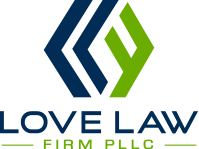
A nonprofit organization is a type of business entity that operates and provides its services without the primary objective of making money. Nonprofit organizations serve the public interest and are typically tax-exempt under the Internal Revenue Code §501(c)(3).
Public charities are the most popular type of 501(c)(3). There are more than 1 million registered in the U.S. with total revenues of over $2 trillion. Of the public charities, just over one-third are human services groups (e.g., food bans, homeless shelters, legal services). The next largest segment are educational groups representing about 20% of the total public charities. These include PTAs, academic institutions, schools, and booster clubs. While health care organizations only account for around 15% of public charities, they receive the lion share of the revenues, more than 60%.
If you’re thinking about forming a nonprofit, here’s a checklist that will help you. However, you should seek legal counsel in forming one as there are numerous legal requirements that can delay your charity’s work if they aren’t done correctly and on time.
1. Conduct Research and Identify a Need.
First, make certain that the work you want to do—investing both your time and money—will address an existing need. Often a personal connection compels people to form a 501(c)(3) entity that responds to needs of family members, friends or their immediate community.
2. Draft a Clear Business Plan.
To hit the ground running, and attract quality board members, sufficient starting capital, and ongoing support, you should be able to articulate what you want to do and the way in which you will accomplish this. This will provide the community with the rationale why they should volunteer or donate to your nonprofit. Prepare your business plan, along with a statement of your mission, vision, and values.
3. Assemble a Team.
In New York, a nonprofit must have at least three members on a board of directors with the roles of president, secretary, and treasurer (you, as the founder, can serve in one of these roles). These names must be listed in the nonprofit’s Articles of Incorporation, and the names and roles must be stated on the nonprofit’s 1023 Form when filing for 501(c)(3) status.
4. Register your Nonprofit.
You must submit the paperwork to establish your nonprofit’s 501(c)(3) status. This includes registering as a nonprofit corporation with the State of New York; obtaining an EIN (Employee Identification Number) from the IRS; and filing for 501(c)(3) Status with the IRS. There are also a host of forms that must be filed with the state, such as Form CT-247, Form ST-119.2, and EPTL Form Char 410.
5. Develop a Fundraising Plan.
This plan is critical to any nonprofit. A fundraising plan is the blueprint for the nonprofits to strategically raise money, which should be in an accessible, accountable way. Think of the fundraising plan as a way to put the nonprofit’s mission into action to address the charity’s objectives and realize its vision.
6. Establish a Base of Operations.
Ready, set, go! The nonprofit is open for business, which means it can begin doing its work. This may include finding volunteers or a paid staff, setting office space, and marketing.
7. Stay Compliant.
You’ll need to be diligent to stay compliant as the nonprofit is formed and as it grows. This type of work may include the following:
- Filing the nonprofit’s annual Form 990, Form 990-EZ, or Form 990-N (annual information return) with the IRS;
- Reviewing and modifying the nonprofit’s bylaws;
- Organizing and attending board meeting schedules; and
- Maintaining state and local registrations.
In addition, best practices – and donor expectations – are that your board of directors will be held to a high ethical standard. This means that you will need a Code of Ethics, Whistleblowing Policy, Conflicts Policy, and a way to monitor and prohibit self-dealing. Very few nonprofits have recovered from an ethical lapse, don’t let yours be one of them.
Summary
Forming a nonprofit can take as long as six months, perhaps even longer. One way to speed up this process is by working with an experienced business attorney. Your nonprofit will need legal expertise in setting up the entity correctly and completing the forms and filings, so it’s usually wise to partner from the onset.
More Resources
If you've been asked to serve on a Board of Directors, read our article about your responsibilities.
Francine E. Love is the Founder & Managing Attorney at LOVE LAW FIRM, PLLC which dedicates its practice to serving entrepreneurs, start-ups and small businesses. The opinions expressed are those of the author. This article is for general information purposes and is not intended to be and should not be taken as legal advice. T

